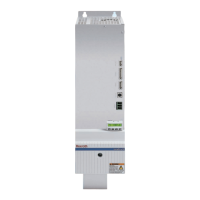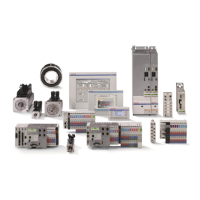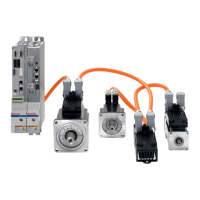Rexroth IndraDrive Determination of Appropriate Power Supply Units 8-5
DOK-INDRV*-HMV-*******-PR01-EN-P
8.4 Regenerated Energy
The energy content of all main and servo drives that brake simultaneously
under unfavorable conditions may not be greater than the maximum
regenerated energy of the power supply unit as specified in the data
sheet. If this is not taken into consideration during the layout stage, then
there could be thermal damage to the bleeder resistor in the power supply
unit!
CAUTION
Property damages due to overloaded bleeder
resistor!
⇒ Use a power supply unit that is appropriate for the
consumption of the regenerated power which arises
when all the main and servo drives connected to the
power supply unit brake simultaneously.
2
eil
G
rot
60
2
*n*
2
J
W
π
=
W
rot
: rotary energy [Ws]
n
eil
: rapid traverse speed [min
-1
]
J
G
: inertia of motor and load inertia reduced to shaft [kgm²]
Fig. 8-14: Regenerated energy per drive
∑
≤
MAXrot
WW
W
rot
: rotary energy [Ws]
W
MAX
: max. permissible regenerated energy of the power supply module
[kWs]
Fig. 8-15: Sum of regenerated energies
In servo drive applications with numerous accel and decel procedures, as
is the case, for example, with nibble machines and rollers, it is advisable
to connect additional capacitors to the DC bus. The following advantages
result from this:
• This prevents the bleeder resistor in the HMV01.1E power supply unit
from being actuated while braking: The heat dissipated within the
control cabinet is considerably reduced.
• The stored energy can be used to accelerate thus reducing energy
requirements of the installation.
()
2
ZW
2
B
ZW
ZW
UU*
2
C
W −=
W
ZW
: energy stored in the DC bus
C
ZW
: DC bus capacitor [F]
U
B
: bleeder actuation threshold
U
ZW
: DC bus nominal voltage
Fig. 8-16: Energy that can be stored in the DC bus
Auxiliary capacitance as energy
storage in the HMV01.1E

